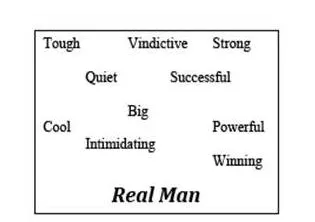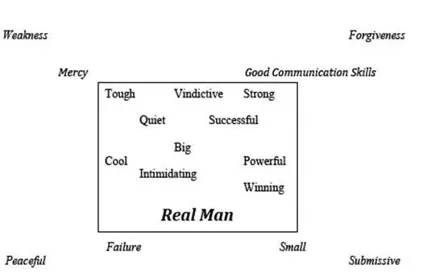One in . . .
One in four females in the United States has been abused by an intimate partner. . .
An abuse-prevention advocate asked a church to host a training workshop. The clergy said they were too busy to spend six hours in this training . . .
One in four women in the United States has been abused by an intimate partner . . .
I had an abuse victim tell me that her pastor suggested she go back to her abusive husband . . .
One in four females in the United States has been abused by an intimate partner . . .
A wife of a seminary student told me that her husband physically and verbally abused her. She felt compelled to go back to him because the dean of the school supported her husband. If she went home, he could graduate and pastor a church . . .
One in four females in the United States has been abused by an intimate partner . . .
A Russian minister told me he did not have time to address abuse—he was too busy . . .
One in four females in the United States has been abused by an intimate partner. . .
Churches sometimes host our domestic-violence-prevention clergy trainings. Usually the male ministers don’t attend—only the female ones. One minister stuck his head in the room, looked at what was going on, and left . . .
One in four females in the United States has been abused by an intimate partner . . .
I heard a preacher list the social-justice issues in our country. Spousal and child abuse were not on the list. I wondered why not . . .
One in four females in the United States has been abused by an intimate partner . . .
I had a Christian doctoral student in psychology tell me that women and feminists were exaggerating this issue. I asked him how many women he had talked with about abuse and rape. He hadn’t, because he believed that they were blowing things out of proportion.
One in four females in the United States has been abused by an intimate partner . . .
I had an elder of a church, whose mom had been physically abused, tell me that I preached about abuse too much. He felt this was a women’s issue.
One in four females in the United States has been abused by an intimate partner. . .
I thought about our first few years of marriage. I had hit my wife. I had contributed to this statistic. I was no different than the men I needed to help. Change is possible, but the memories still hurt . . .
One in four females in the United States has been abused by an intimate partner . . .
One in six males acknowledges having been physically or sexually abused in his life . . .
I met a Christian who loved God, his wife, and their baby. He told me that his stepmother used a one-inch-by-two-inch board to punish him and his five brothers. He told me that one day she broke the board on his head. He thanked God because the beatings stopped that day—until she got a new board. I cried when I got home, and prayed about him. I cried really hard.
One in six males acknowledges having been physically or sexually abused in his life . . .
A young man came for counseling and confessed a struggle with pornography. His first sexual encounter was when he was fifteen. She was a divorced woman at church. She was mad at his dad for preaching about divorce, so she invited the boy over to her house and they had sex. He cried about his shame and addiction. I cried with him.
We prayed, “God, where the hell were you in all of this?”
I thought about Van Halen’s song “Hot for Teacher.” I feel differently now when I hear the song.
One in six males acknowledges having been physically or sexually abused in his life . . .
A young man came to my office. His wife was expecting a baby. He was scared. He had been molested by his father and uncle and raped by a man when he was eighteen, drunk, and in a hotel. He said that because he had been abused, he was afraid he would be an abuser. He had been praying for a daughter, because he was afraid that if he were to have a son, he would abuse him. I told him abuse was a choice, not inherited. He cried. I hugged him.
He said, “I can break the cycle.” He has. He has also helped hundreds of others do the same.
One in six males acknowledges having been physically or sexually abused in their lives . . .
A man who was married and had children came to talk about a struggle with his identity as a man. His first sexual experience was at seventeen with a male professor who met him at a club. I suggested that he was a sexual-assault survivor.
He said, “I can’t be—it felt good.”
I said that didn’t matter. He said he had been ashamed for years. I told him it wasn’t his fault. He thought it was his fault. I said, “No. You are a survivor, strong, and a good father and husband.”
He smiled. “Yes, I am.”
One in six males acknowledges having been physically or sexually abused in their lives . . .
In a newspaper interview, I confessed for the first time in my life a sexual experience with an eighteen-year-old male babysitter. I was eleven; my brother was nine. It set me on a road of shame for many years. It gushed out during the interview.
“You need to talk to someone,” the reporter said.
He was right. I did. I am one of the statistics.
However, not everyone speaks out.
2 / Who Is the Enemy?
Man Up
As young boys many of us were quickly taught that there are two types of people: females and males. While young, we learn different terms for females: Girls, mommies, ladies, grandmas, aunts, sisters, girlfriends, or women are the people we place in the female group. These titles were used for those females active in various areas of our lives. We also learned that boys, daddies, guys, grandpas, uncles, brothers, friends, and men belonged to a different group. Notice that as male speakers, we do not typically form a compound word with the nouns boy and friend as we might with girl and friend. Males were completely distinct from females. Males stand up to go to the bathroom, and girls sit down. (If our dad respected mom, he reminded us to lift the toilet lid.) Boys were designed to have a specific role that identified with our maleness. In addition our roles in sports, choices of toys, clothing, and behavior had to reflect our maleness.
We also learned the differences between boy and girl when we broke the acceptable male behavior code. When we stepped outside of this behavior or Man Box as we call it, we were reminded that we were deviating from a certain acceptable form of behavior. This Man Box (figure 1) is used in domestic-violence prevention groups with abusive and controlling men. The Man Box is an illustration that suggests that males are given a narrow parameter of acceptable emotions. When men are asked what feelings and behaviors are associated with masculinity, a box is created with a list of these emotions and feelings inside (figure 1). A real man, as we were taught, is tough, strong, sexy, independent, and the like.
Figure 1: Definition of a Real Man?
The emotions outside of the box, which are opposite those inside the box, are considered feminine (figure 2). Thus, those who are not real men are weak, submissive, dependent, and loving. When we as young boys cried, expressed sadness, or felt vulnerable, we were told to “man up,” or to “be a man.” We were also taught to “man up” by the criticisms many of our fathers used: “Stop being a sissy.” “Stop acting like a girl.” “You’re being a wuss.” “Don’t be such a fag.” We were taught that manhood or maleness is behavioral rather than biological, and is defined by a standard set of acceptable behaviors determined by other males, females, and society. This maleness, we were taught, did not occur naturally and was enforced by others who understood these “approved” roles that contrasted with feminine stereotypes.
Figure 2: Behaviors Outside the Box
Those of us who heard this advice from fathers, coaches, friends, or other males and females learned that there were emotions we, as budding men, could display. We also learned that those emotions and behaviors that we were not allowed to show were practiced by women and those who acted like females. Those who acted like females represented a new category that we, as young boys, were told was bad (figure 3). They manifested this new person who was identified by his unacceptable behavior. Wuss, wimp, sissy, and pussy were terms used for males who did not “man up.” As we grew later in life gay and lesbian terms were used for this new class of human that was created not by God but by other men. The only thing we knew about this “new man” was that we didn’t want to be one.
Figure 3: Staying Inside the Box
Even though the book of Genesis taught us that God created humans, males and females, both in Go...



